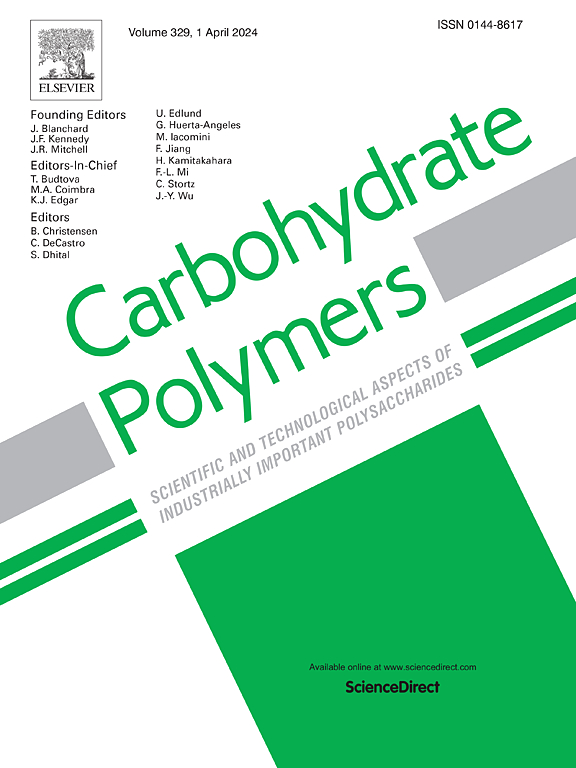Cellulose-based circularly polarized luminescence nanofilm with superior optical intensity and controllable direction
IF 10.7
1区 化学
Q1 CHEMISTRY, APPLIED
引用次数: 0
Abstract
Synthesizing the circularly polarized luminescent (CPL) assemblies with strong intensity and real-time handedness direction control requires an ingenious structure design, which is difficult in traditional optical materials. This work utilizes the self-assembled cellulose nanocrystals (CNCs) as the chiral template and packages the luminophores into the platform, to design a kind of CPL nanofilm. By optimizing the photonic bandgap structure, it possesses a considerable CPL and superior mechanical flexibility, which makes it a candidate for the next generation of wearable sensing devices. Additionally, it displays the reversible optical response in the humidity- or ammonia gas-stimulus. Next, this work designs two CPL amplification strategies, divided into selective reflection design and optical pathway length optimization. The intensified dissymmetry factor (glum) has reached −1.39. Since, by simply tuning the sequence of two films, the handedness direction is successfully switched, with the inverted glum of approximately 0.4442. This dual-direction CPL intensity has preceded most cellulose-based chiral luminescent materials. Importantly, this optical design avoids the incorporation of external stimuli and disruption of the inner structure. At last, this photonic film with direction- and intensity-controllable is used in the photo-induced polymerization reaction and optical anti-counterfeiting areas.

求助全文
约1分钟内获得全文
求助全文
来源期刊

Carbohydrate Polymers
化学-高分子科学
CiteScore
22.40
自引率
8.00%
发文量
1286
审稿时长
47 days
期刊介绍:
Carbohydrate Polymers stands as a prominent journal in the glycoscience field, dedicated to exploring and harnessing the potential of polysaccharides with applications spanning bioenergy, bioplastics, biomaterials, biorefining, chemistry, drug delivery, food, health, nanotechnology, packaging, paper, pharmaceuticals, medicine, oil recovery, textiles, tissue engineering, wood, and various aspects of glycoscience.
The journal emphasizes the central role of well-characterized carbohydrate polymers, highlighting their significance as the primary focus rather than a peripheral topic. Each paper must prominently feature at least one named carbohydrate polymer, evident in both citation and title, with a commitment to innovative research that advances scientific knowledge.
 求助内容:
求助内容: 应助结果提醒方式:
应助结果提醒方式:


